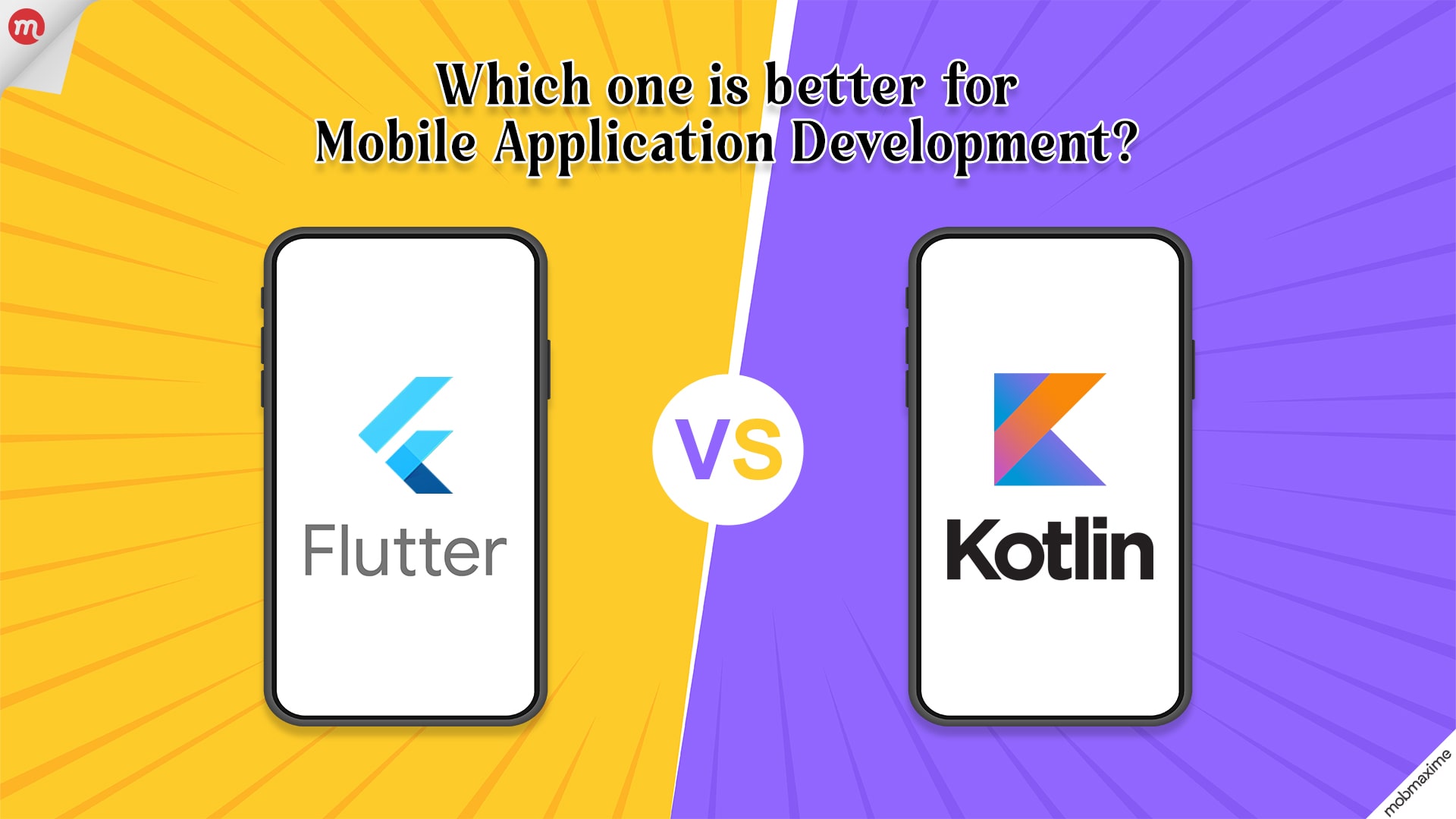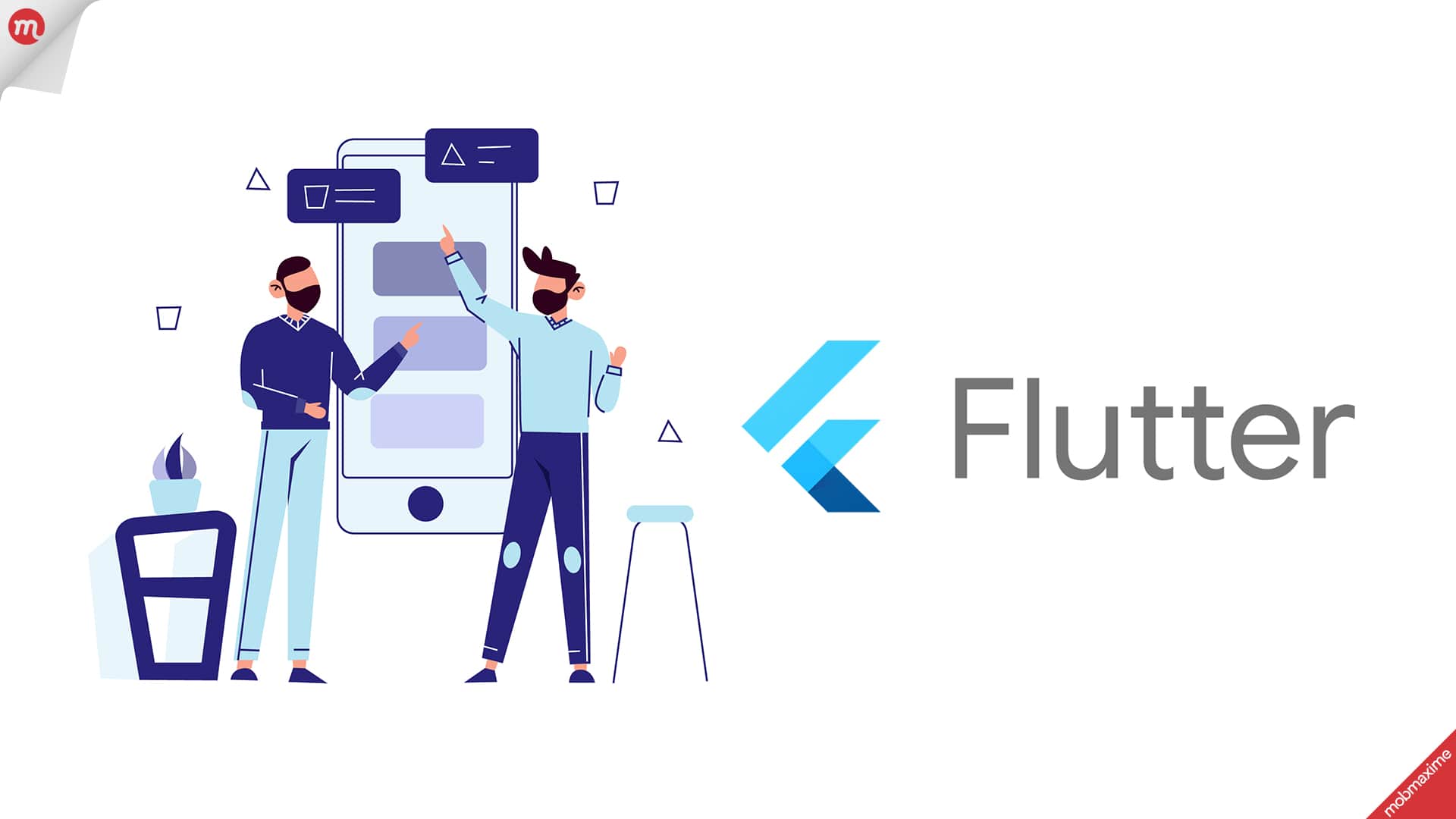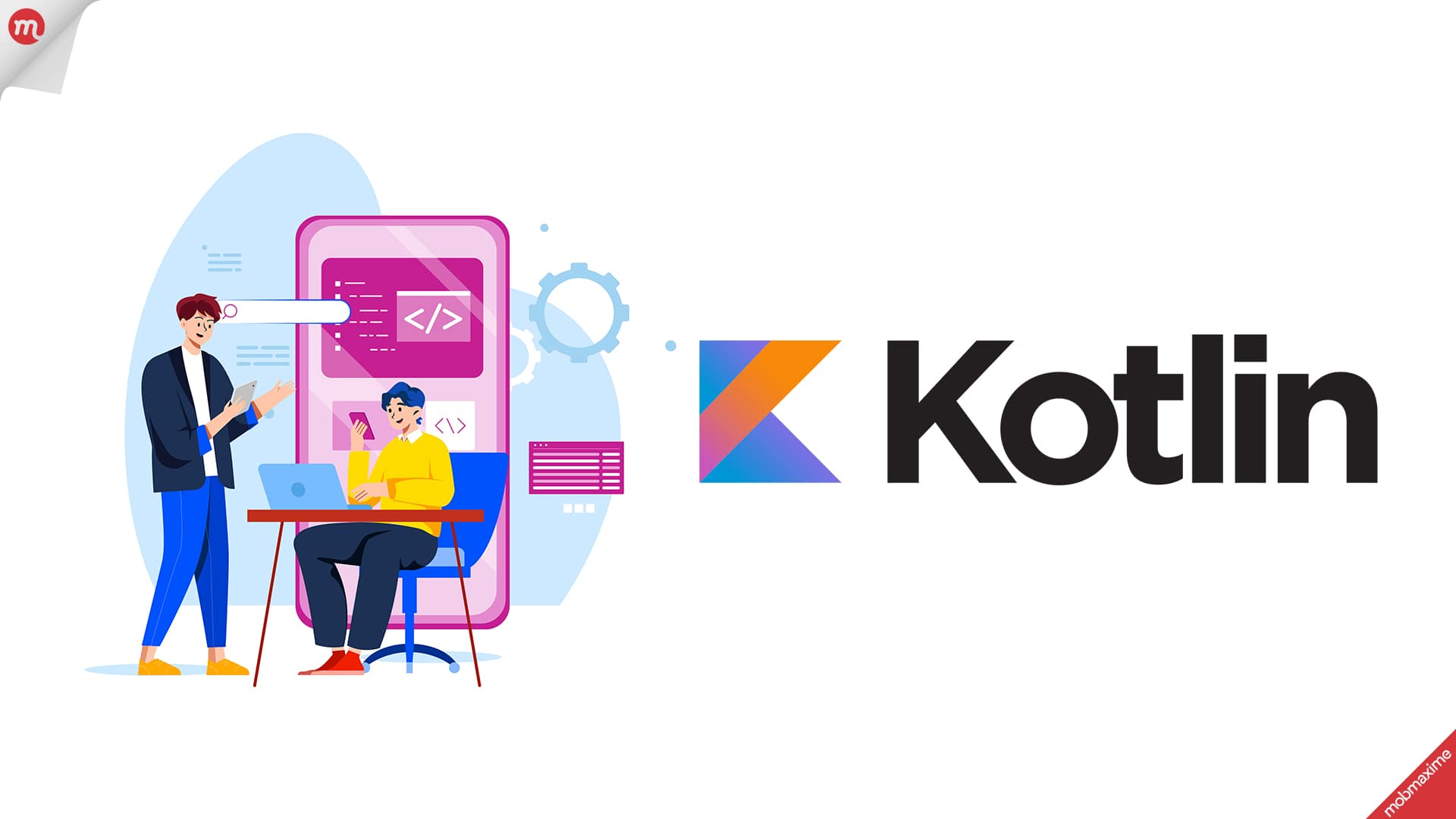Flutter vs Kotlin: Which One is better for Mobile Application Development in 2023?

Smartphones turned into an integral part of our lives with the digital leap to make lives more convenient and comfortable. You can get a glimpse of the size and scalability of the mobile application development industry with worldwide subscriptions of 8.6 billion. Earlier mobile application development was platform-specific or native, but later cross-platform app development took the lead.
However, in order to save time, cost, and faster performance, cross-platform app development companies turned towards Flutter. Flutter became a cost-effective synonym for cross-platform development technology, and then Kotlin entered into the competition with its Kotlin Multiplatform capability. Kotlin has its own competitive edge to build a space among businesses and mobile app development companies.
With the increasing popularity of cross-platform app development, the year 2023 brings an obvious question for businesses and developers: Which one is better for mobile application development, Flutter or Kotlin? Wait, before going into the discussion of ‘Flutter Vs. Kotlin,’ let’s take a look at the exclusive features, advantages, and disadvantages of both technologies.
Must Read: Full-Stack vs. MEAN Stack vs. MERN Stack: How to Choose the Right Stack?
Flutter: An Overview

Back in 2015, Google launched Flutter to the mobile application domain as an open-source SDK (Software Development Kit) to build the application for an unmatchable experience. Flutter simplifies developing a modern as well as native-looking mobile, web, and desktop application with a single codebase. Since its inception, Google has introduced multiple advancements and innovations in the Flutter framework to make it one of the preferred choices in cross-platform mobile application development.
Features of Flutter
Flutter enabled developers to address technological challenges and bring numerous advancements in the development process. A result of Flutter’s uncanny features and capabilities is now being used by top developers to efficiently run huge projects. Moving ahead, let’s have a look over the essential features of Flutter in application development.
- Open-Source and Free –Flutter is easy to use an open-source, and free framework that empowers developers to learn and use the code for building applications. Flutter is a modern framework that enables developers to work on endless mobile application capabilities to achieve goals.
- Hot Reload Capability – ‘Hot Reload’ is one of the exciting features of Flutter that made it a popular framework for any top Flutter app development company in the domain. A change at the backend instantly gets ‘Hot Reload’ at the front end, which makes developers’ jobs easier.
- Cross-Platform Development– Any cross-platform app development company loves this feature of Flutter. Using single code by Flutter developers can run on different platforms, be it web, desktop, or mobile.
- Highly Customizable Widgets – The next best feature of Flutter is that it provides support for platform-centric widgets to give a look and feel of native-like applications. Cupertino and Material Design widgets make developing a glitch-free native platform experience more effortless.
- Faster and Budget-Friendly – With the cross-platform capability, Flutter can save cost and develop native-like apps in less time for Android and iOS. A single codebase framework in real-time testing helps to lower the mobile application development budget.
- Suitable for MVPs – One of the prime benefits of Flutter is that it enables developers to code any application for less time, low cost, and minimal effort. It supports the idea of a Minimum Viable Product (MVP) strategy, especially for startups to get their ideas tested in less time and cost.
Flutter Uses
Flutter gives app developers the liberty to unify branded mobile, web, and desktop apps for a single codebase. It saves the time, cost, and resources to develop native-like apps; that’s why Flutter is a blessing for MVP startups. They can speed up the app development for multiple platforms similar to native ones.
Advantages
- Easy to Use – Quick to install and easier to create fully functional apps with minimal coding.
- Huge Native Support – A great native support to ensure a native-like UI experience.
- Beautiful Widgets and Expressive UIs – Its widget-oriented framework with numerous customization gives phenomenal widgets and UI experience.
- Popular Among Developers – Flutter is widely prevalent among developers and companies.
- Low Cost and Faster Development – Saves your development cost and paces up the process.
Disadvantages
- Larger App Sizes – Apps are self-contained and carry all code, so they take more size on the device.
- Low Adoption – Though widespread yet low adoption is needed to learn the Dart programming language.
- Performance Issues with iOS – More Android developers favourite rather iOS as being the Google product.
Popular Apps Developed Using Flutter
- Google Ads
- CRED
- Xianyu by Alibaba
- Postmuse
- Square, etc.
Kotlin – An Overview

JetBrains, a Czech development company, gave birth to Kotlin as the modern statically typed open-source programming language in 2010. Later on in the year 2016, JetBrains officially released for developers as Kotlin 1.0. Google realized the unlimited app development capabilities of this JVM (Java Virtual Machine) interoperate Kotlin and announced Kotlin as the preferred language for any Android app development project. With a single code, Kotlin developers can use it for multiple platforms, including iOS, Android OS, web applications, etc., for enhanced performance and a native-like app experience.
Features of Kotlin
Kotlin has recently entered the mobile application development market, yet giving tough competition to the existing players despite being comparatively newer. Powered with Java interoperable capability, Kotlin, a new-age app programming language, offers brilliant features with multiplatform capabilities that enable developers to share code and logic across multiple platforms. Kotlin overcomes the shortcoming of restrictive memory platforms. Moving ahead, look over the exclusive features of Kotlin that made Google adopt it for Android Apps development.
- Interoperable with Java – Kotlin has the edge over other cross-platform application development technologies for being fully interoperable with Java frameworks, libraries, and Android. Seamlessly, it allows developers to call the Java code in Kotlin and vice-versa, which enables easy interaction with the native environment.
- Open-Source and Easy Learning – We know that Kotlin is an open-source statically typed programming language with interoperable Java capability to make it available for all. Here, it is one of the unique features that help developers quickly learn it.
- Native UI Experience – Native-like UI experience is one of the prime features of Kotlin that attracts app developers. It gives tremendous freedom with using the platform’s local libraries and widgets for an exact native-like app behaviour, appearance, and performance.
- Avoids Null Exceptions – What makes Kotlin a preferred and popular among developers as it has the null safety feature. It enables developers to eliminate the ‘Null Pointer Exception’ from the code, avoids errors that occur from unintentional variables access, and eases the work.
- Enhanced Performance – With the growing need for faster app performance, Kotlin leads mobile application development. Across multiple platforms, it compiles a similar code format to the targeted platform to give an enhanced performance like the native ones.
- Concise and Secure Code – Kotlin coding is extremely clear, simple, and compact for developers. It allows developers to write compact code and avoid extra coding, making it concise with fewer bugs to fix. With Kotlin, developers can avoid common programming execution mistakes, so it turns into a highly secure development.
Kotlin Uses
Kotlin runs on JVM (Java Virtual Machine) and uses less complex code than Java. It is suitable for any mobile platform development, including full-stack server-side, client-side web, and Android development. Kotlin uses less app size, so developers prefer Kotlin for lighter apps with native-like performance.
Advantages
- Easy to Learn – Syntax similarity with Swift, Java, Groovy, and Scala makes it easy to learn, and additionally provides easy migration.
- Higher App Performance – Gives better app performance as compiles code similar to the targeted platform.
- UI Experience – Enables developers to work on native appearance and performance for an incredible experience.
- Wide Adoption and Popularity – Flexibility and scalability make developers lean towards Kotlin and make widely adopted
Disadvantages
- Expensive Development Cost –Semi-native functionalities increase the app development cost.
- Lack of Native Support – Native support is less available compared to other popular SDKs.
- Early Experimental Stage – In the early experimental stage, developers hesitate to prefer for bigger projects.
Popular Apps Developed Using Kotlin
- Google Home
- Atlassian
- Adobe
- Zomato
- Udemy, etc.
Flutter Vs. Kotlin: A Detailed Analysis
We have touched on the multiple facets of Flutter and Kotlin under application development capabilities. It highlights the difference between Flutter and Kotlin for developers based on respective features and capabilities. Comparing these two would be difficult side by side, yet we can go analysis based on various criteria.
Before we get into who is better and who overpasses another, let’s briefly look over the ‘Flutter and Kotlin difference.’
Flutter Vs. Kotlin: The Clash of Titans
| Flutter | Kotlin | |
| Developer | JetBrains | |
| Programming Language | Dart | Kotlin |
| Release Status | Stable | Alpha |
| Component Library | Extensive library and rapidly growing | Small library, yet gradually growing |
| GitHub Popularity | 147K Stars | 43.2K Stars |
| Performance | Native-like performance | Unified performance as good as native apps |
| UI Experience | Proprietary widgets and customization | No preconceived regulation, native-like experience |
| Hot Reload | Yes, available | No, not available |
| Scalable | Less scalable | Scalable for any project size |
| Learning Curve | Needed to learn Dart before learning | Easier learning curve as similar to Java |
| Deployment | Mobile, Web, Desktop | Mobile, Web, Desktop |
| Community Support | Huge community support and popularity | Less community support, yet growing |
| 3rd Party Integration | Requires tools and libraries | Not needed |
| Pricing | Open source and free to download | Open source and free to download |
| Minimum Platform Support | Android 4.1, 10, 16 & iOS 8+ | Android 7 and iOS 8+ |
Learning Curve – The first and foremost feature a developer seeks in technology is its ‘Learning Curve.’ Flutter uses the Dart programming language, meaning developers need to learn from the basics despite being easy to learn. Any Flutter app development company will prefer developers with experience in Dart programming. On the other hand, Kotlin is interoperable with Java, so Kotlin Multiplatform has a shallow ‘learning curve’ for developers compared to Flutter.
App Size and Performance – One of the criteria that marketers consider before choosing between Flutter and Kotlin is the app performance and respective size. Flutter requires libraries for native components for adequate app performance, resulting in larger app size. Whereas, Kotlin compiles in the native format, to give better performance without consuming more resources.
Development Speed and Time – Whenever any cross-platform app development company needs to make a choice between Flutter and Kotlin, then the time and speed to develop an application play a vital role. With its cross-platform app development capabilities, Flutter enables faster development (even ‘Hot Reload’ helps developers) in less time. Whilst Kotlin Multiplatform is a relatively new platform takes more time despite compact codes.
Time-to-Market – The time taken to develop an application from conceptualization to development and further to the outreach target audience is ‘Time-to-Market’ (TTM) in the application development. If you look at both of these technologies, Flutter and Kotlin, you will find that both significantly use less time to develop.
With its ‘Hot Reload’ capacity, Flutter makes it faster to change and test using the customizable feature and set of rich widgets for quicker UI development. On the other hand, Kotlin comes with concise syntax that enables maximum code reusability for faster app development. Here, Flutter gives a little faster app development compared to Kotlin, so a significantly lesser time-to-market.
Backend Development Scope – The scope in backend development draws a clear line and highlights the Flutter and Kotlin differences. Flutter leverages BaaS (Backend-as-a-Service) platform using Firebase for seamless communication between the backend and the frontend. However, Kotlin is ahead of Flutter, allowing developers to write the backend code easily.
Community Support and Documentation – Compared to Kotlin, Flutter is a well-established and documented platform that makes it a genuine preference by developers. Flutter has enormous community support and various testing tools for stable cross-platform development. Kotlin somewhat lags as being in the experimental stage and requires better documentation. Somewhat, a natural preference towards Flutter increases.
Third-Party Libraries and Tools Integration – Flutter, the cross-platform SDK, require third-party libraries and tools for UI development integration. Flutter gives the liberty to use Android Studio, Supernova, Codemagic, Appetize, Visual Studio Code, Adobe Plugins or Firebase tools for integration.
When you look towards Kotlin, it functions in the native-app ecosystems, so instead of third-party integration, it employs the same libraries and tools, including Jetpack Compose and SwiftUI.
UI Experience –UI experience is essential for cross-platform developers to ensure a native-like appearance and performance. Between Flutter and Kotlin, it is difficult to decide who gives a better UI experience; however, Flutter has some advantages here. Being a widget-oriented cross-platform, Flutter gives a native-like experience. If you look towards Kotlin, it has the freedom to use the platform’s widgets as well as local libraries to get the exact native look and appearance, yet it takes more time to develop.
Market Share – Google Trends Analysis between Flutter Vs. Kotlin

Market Share – Application development has similar popularity and acceptance for both Flutter and Kotlin. However, when it comes to considering market share, Flutter has the edge over Kotlin. In the cross-platform development ecosystem, Flutter has many things to lead with its native-like experience under a lesser budget, time, and more. Whereas Kotlin, comparing a newer technology, is yet to beat the existing market share of Flutter. Additionally, the Google Trends analysis between these clearly shows that Flutter is ahead of Kotlin. Kotlin is gradually creating its place in the application development world.
Stack Overflow comparison – This tech enthusiast programmer’s platform Stack Overflow also gives an idea for businesses to compare Flutter and Kotlin for cross-application development projects. According to their recent survey, 12.64% of developers prefer Flutter compared to Kotlin which is merely 9.16% of developers’ choice. Here, developers have various reasons to support their preference. Flutter has comprehensive documentation, resources, and public learning platforms to make it easier to learn. Kotlin is powered with ‘Java interoperable’ capability to make it easy to adopt yet under the development stage.
Pricing – The reason why developers prefer Flutter over Kotlin is its low pricing and development cost. Flutter gives a native-like experience under $35K for any basic to medium complexity application in less time than Kotlin, which costs around $50K for the same complexity with Kotlin. Here, Flutter turns out to be the obvious choice for MVPs due to the low pricing and lesser delivery time.
Conclusion
Flutter and Kotlin, are both new-age application development platforms for scalable, faster, secure, and reliable application development with numerous capabilities. Google supports and relies upon both for better performance and experience despite the tough competition they give to each other. Kotlin has the edge over Flutter, being the fully Java interoperable, which is a prime reason that Kotlin will be the better mobile application development technology in 2023 for any size and scale of the project.
However, Flutter is going to be around for a while despite the increasing popularity of Kotlin. It is suggested to consult and hire nearshore mobile app developers like Mobmaxime to have a detailed requirement analysis of your app development project, learn the difference between Flutter and Kotlin, and find which one is better between Flutter and Kotlin.
Join 10,000 subscribers!
Join Our subscriber’s list and trends, especially on mobile apps development.I hereby agree to receive newsletters from Mobmaxime and acknowledge company's Privacy Policy.
